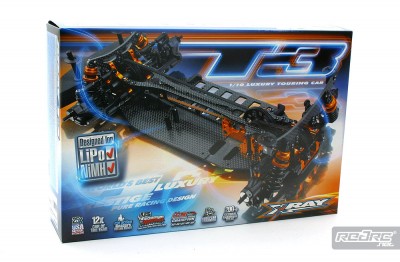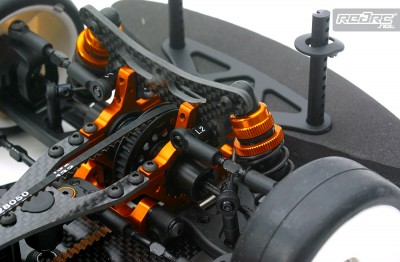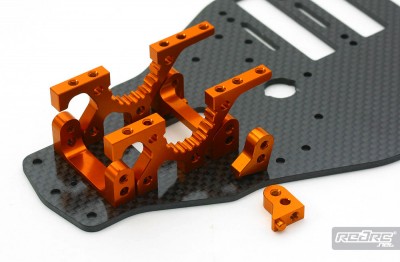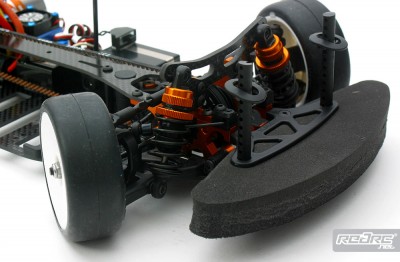Xray T3 – History Repeating
It’s a good tradition at Slovakian manufacturer Xray to present a new touring car towards the end of the year and 2009 made no exception to this rule. We reviewed the T2 ‘009 back in March and, as you might expect, for some time now the 2010 car is up for grabs. The T2 ‘010 is … err, stop, there is no ‘010 as Xray decided to introduce the next evolution of their race and award winning T-cars platform: the T3! As you would expect with Xray the new car is more of an evolution than a revolution although some wished to see a totally new layout with the now common heavier-than-brushed-set-ups brushless motors and speed controls and lightweight LiPo battery packs. Instead of a totally new car Xray introduced an only slightly adapted T2 that copes with the new equipment and does not deny its roots. In fact on first glance one could easily overlook the many changes that went into the new Xray T3!
As we are quite sure most of you will know the basic design ideas behind a modern electric touring car we will not bore you with details like ‘the car has four wheels, four wishbones and four oil-filled shocks’ and instead go straight into the details of Xray’s new T3. As usual Xray offers both ‘rubber’ and ‘foam’ editions of their touring cars that are specially designed for the use with the dedicated type of tyres. Up for review is the EU Rubber Spec kit.
Front
The front and rear bulkheads underwent the majority of the changes compared to the T2 ‘009 as the T3 is designed with the use of LiPo batteries in mind. While the taller T2 ‘009 bulkheads called for the use of optional spacing plates to raise the height of the top plate to make way for bigger LiPo batteries the T3 shows revised bulkheads that add 2mm of height between the chassis plate and the top deck. This even allows for the use of the new 24 mm LiPo batteries like the new Team Orion Carbon Molecular packs.
The most important change between the T2 and the T3 is the design of the bulkheads and especially the lower suspension mounting. While the wishbones of the T2 ‘009 attach directly to the bulkheads the T3 features separated braces that are independent from the bulkheads. The 2010 edition of the Xray touring car still features the known plastic mounting for the lower wishbones that allow for a precise adjustment of the car’s roll-centre but these now attach to braces making for a mounting quite similar to Hot Bodies Cyclone TC or Tamiya TRF416. According to Xray the new mounting allow for a more controlled flexibility of the chassis and therefore more traction.
Our kit featured the updated #302047 ‘T3 Alu Lower Suspension Block’ that is a direct replacement for the standard two piece rear lower suspension holder blocks on the front of the T3. The new one piece block prevents the block and screw from becomes ripped out in a hard impact. This was the case with the first Gen kits/design and it is a nice touch to find the updated parts in the kit rather than having to buy them as an optional part. Nevertheless we recommend to harden the chassis’ countersunk holes for the suspension mounts and bumper support as recommended in the supplementary sheet provided with the manual.
The front of the T3 also shows updated steering blocks that allow for more steering throw resulting in more steering in tight corners. Another updated item are the upper ‘Quick Roll-Centers’, which allow for easy adjustment of the length and angle of the upper turnbuckles. The 2010 versions of the QRC feature more offset compared to the previous items resulting in both longer and shorter settings possible and therefore more influence in chassis set-up. They also look much nicer with their slim design and the black coating compared to the bulky orange knobs found on the T2-based cars.
Aside from the upper camber links the geometry of the front end is unchanged to the T2 ‘009 as far as we could measure out. The externally adjustable oil-filled shocks feature the C3.0 springs as found in the T2 ‘009 kit but the supplied front swaybar now features a thinner 1.4 mm wire over the 1.6 mm one found in last years car to adapt to the lighter overall weight of the car when used with LiPo batteries.











